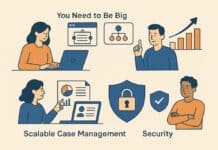The digital divide can make it difficult for some underserved communities to take advantage of the opportunities the internet provides. As the United States works to address its internet infrastructure issues, here are some ways programs are working to help close the digital divide in their communities.
Hotspots for Educational Institutions
As education begins to rely more and more on internet resources, students who don’t have reliable online access can be left behind. Schools that recognize this are working to provide mobile hotspot solutions to help keep these students on track. Programs that provide both low-cost internet and mobile hotspots to educational institutions are a vital piece of helping these students connect to the internet.
For students who may have internet access, but one that isn’t reliable, a school wifi hotspot is a great option for after-school internet access. Best of all, these wifi hotspots can be used to provide drive-up internet access to entire communities, allowing both students and non-students the ability to take advantage of the world wide web.
Recycled and Refurbished Electronics
Mobile hotspots are a powerful solution to address the digital divide, but if students don’t have a device capable of connecting to the internet, hotspots only solve half of the problem. Phones, tablets, and computers can be very expensive. Programs that recycle and refurbish used electronics help to lower that cost. Recycled electronics that have been repaired and certified by a technician are a great way to provide students with affordable devices. Some electronic recycling programs limit their used equipment donations to educational institutions, but there are also programs that individuals and businesses struggling with the cost of new devices can take advantage of. If you are working with a tight electronics budget, your local government center can help direct you to a trustworthy device recycling program.
If you’re considering upgrading your personal or business electronics, consider donating that equipment to a local recycling program. By giving these devices a second life, you can reduce the carbon footprint of technology and help connect members of your community to the internet.
Low-Cost Internet
The cost of paying for internet service can prevent some people from accessing the internet, even in communities where the internet is widely available. Individuals who need help covering the cost of the internet have a few options. Enrollment in a government low-income assistance program, such as SNAP, can qualify you for home internet payment assistance. Some major carriers even offer discounts to qualifying households to help cover their internet costs.
Some programs work with major broadband providers in order to provide low-cost internet service for non-profit organizations. These non-profit organizations often loan hotspots to educators, students, and employees who would otherwise be unable to connect to the internet.
The internet is a valuable tool for education, healthcare, and entertainment. Programs that help underserved individuals and communities connect to the many resources the internet provides are working hard to make sure no one gets left behind.



